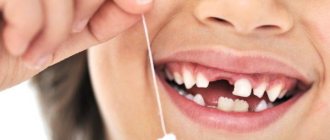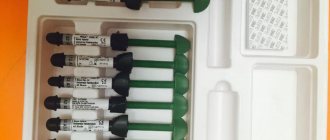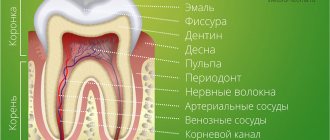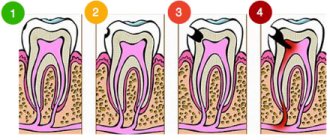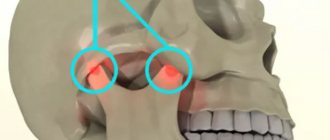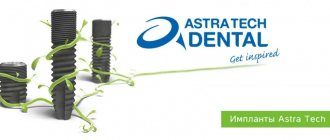Luxators ML series
Caution: Luxators have thin blades and are not intended for twisting movements. Used only for cutting the periodontal ligament. Excessive force will damage the luxator blades.
Description:
Luxators provide atraumatic extraction while maintaining the integrity of the cortical plate of the alveolar ridge and the shape of the tooth socket.
The concave inner surface follows the shape of the tooth, the sharp and thin cutting edges effectively trim the periodontal ligament.
The anatomical handle coated with aluminum oxide allows you to easily and quickly carry out the most complex removals, which is especially important for implantation purposes.
Peculiarities:
- thin blade of anatomical shape;
- atraumatic extraction;
- reliable control of the tool and comfort of work thanks to the anatomical shape of the handle;
- effective combination with removal tools.
The procedure for working with luxators:
- The luxator blade is inserted axially between the tooth root and the bone tissue of the socket.
- The immersion depth of the blade is about two-thirds of the length of the tooth root.
- The periodontal ligament is cut through light translational and pendulum movements of the luxator blade in a circle along the tooth root. Avoid twisting movements.
- Once the periodontal ligament has been completely cut with the luxator, carefully remove the tooth from the socket using an elevator or forceps.
ME series elevators
Attention: Before starting work with elevators, it is recommended to use luxators and periotomes in order to completely cut the periodontal ligament, which will ensure an atraumatic removal process. Excessive force will damage the elevator blades.
Description:
- A thin, sharp blade made of high-quality steel ensures atraumatic extraction while maintaining the integrity of the cortical plate of the alveolar ridge.
- The concave inner surface follows the shape of the tooth root; sharp and thin cutting edges trim the periodontal ligament.
- The anatomical handle coated with aluminum oxide provides reliable control of the instrument in the hand, reduces the load and stress on the hand and allows you to easily and quickly carry out the most complex removals.
Peculiarities:
- thin blade of anatomical shape;
- atraumatic extraction;
- reliable control of the tool and comfort of work thanks to the anatomical shape of the handle;
- effective combination with removal tools.
Operating procedure for elevators:
- The luxator blade is inserted axially between the tooth root and the bone tissue of the socket.
- The immersion depth of the blade is about two-thirds of the length of the tooth root.
- The periodontal ligament is cut through light translational and pendulum movements of the luxator blade in a circle along the tooth root. Avoid twisting movements.
- Once the periodontal ligament has been completely cut with the luxator, carefully remove the tooth from the socket using an elevator or forceps.
Elevators of the RET, RTP, RTE series
Attention: Before starting work with elevators, it is recommended to use luxators and periotomes in order to completely cut the periodontal ligament, which will ensure an atraumatic removal process. Excessive force will damage the elevator blades.
Description:
A thin, sharp blade made of high-quality steel ensures atraumatic extraction while maintaining the integrity of the cortical plate of the alveolar ridge.
The concave inner surface follows the shape of the tooth root; sharp and thin cutting edges trim the periodontal ligament.
The anatomical handle provides reliable control of the instrument in the hand, reduces the load and stress on the hand and allows you to easily and quickly carry out the most complex removals.
Peculiarities:
- thin blade of anatomical shape;
- atraumatic extraction;
- reliable control of the tool and comfort of work thanks to the anatomical shape of the handle;
- effective combination with removal tools.
Operating procedure for elevators:
- The luxator blade is inserted axially between the tooth root and the bone tissue of the socket.
- The immersion depth of the blade is about two-thirds of the length of the tooth root.
- The periodontal ligament is cut through light translational and pendulum movements of the luxator blade in a circle along the tooth root. Avoid twisting movements.
- Once the periodontal ligament has been completely cut with the luxator, carefully remove the tooth from the socket using an elevator or forceps.
What is piezosurgery? Features, nuances, indications
Piezosurgery (non-contact surgery) is an innovative method of performing surgical operations based on the influence of ultrasound. The procedure is performed using a piezotome - an ultrasonic knife that produces vibrations, thereby carefully and as accurately as possible affecting the tissues of the oral cavity. This is a more “advanced” alternative to well-known surgical techniques in dentistry, the ability to abandon traditional burs and bone drills. During the procedure, the effect is not mechanical, but ultrasonic.
This is interesting! The piezosurgical dental instrument was invented in 1988. The action of the knife is based on oscillations of ultrasound waves (from 60 to 200 mm/sec), which ensure safe and precisely targeted cutting of gums and hard tissues. Soft tissues, as well as blood vessels and nerves are not injured.
Main indications for piezosurgery:
- removal of patients' teeth, including wisdom teeth;
- building up bone tissue before implantation (in particular, taking material to prepare the area for surgery);
- removal of cystic formations, granulomas;
- sinus lift or elevation of the maxillary sinuses;
- microsurgical operations on the jaw, for example, opening of the mandibular alveolar nerve, removal of tumors, etc.
Despite the fact that the operation has a minimal number of contraindications, piezosurgery is still not recommended for some patients. For example, people with diabetes, oncology, serious disorders of the nervous system, problems with blood clotting, and also if they have a pacemaker.
Also, one of the contraindications for the procedure is the presence of fillings in the tooth. When using ultrasound, there is a high risk of damage to the filling material, so when working with such a knife, high qualifications are required.
Dentistry for those who love to smile
+7
Make an appointment
Recovery after deletion
In the postoperative period, additional care for the socket is indicated to prevent complications. Possible complications are associated with the wrong choice of technique, an error during removal, systemic diseases, and improper care after surgery.
Bleeding very often occurs after surgery, which the dentist can treat with hydrogen peroxide and socket tamponade. If bleeding continues, the dentist uses hemostatic drugs to stop bleeding from the socket.
At home, after removal, you need to treat the hole with antiseptic drugs - this means rinsing the mouth with weak antiseptic solutions. To relieve pain, you need to take medications prescribed by your doctor. Swelling, inflammation, and itching may occur near the hole of the extracted tooth - you should contact your dentist with these complaints, as this is a sign of infection or the development of periodontal inflammation.
Hygienic procedures after removal remain unchanged, but direct contact of the toothbrush bristles with the socket should be avoided. While eating, you need to cover the hole with cotton wool and then rinse your mouth with warm water and soda.
Surgical dentistry has moved forward in many ways in terms of the technologies, drugs and techniques used. Today, the risk of inadequate surgery is practically absent, and the dentition can be restored in many ways. Surgical dentistry is directly related to orthopedics, orthodontics, and aesthetic dentistry, so the patient does not have to worry about an aesthetic defect after treatment.
Tooth extraction using piezosurgery - main stages
To describe the operation using a piezo knife, consider the removal of an impacted tooth as an example:
Stage No. 1 – anesthesia
. As a rule, local anesthesia is administered, which is sufficient for a comfortable procedure in the oral cavity;
Stage No. 2 - gaining access to the tooth
. Using a laser knife, the hood in the gum is cut to expose the pathological tooth;
Stage No. 3 – working with the root part
. If the root is complex, especially at an angle, the surgeon decides to divide the tooth into two parts. At this stage, it is important to remove the root so as not to damage the bone tissue. Any bone deformities can potentially lead to long-term rehabilitation and complications;
Stage No. 4 – working with the gums
. Sutures are placed on the gum, a sterile swab is placed in the operating area (socket), and medicine is applied on top to speed up tissue healing.
It is important! Before the operation, it is advisable for the patient not to eat for 1-2 hours, and if necessary, take a sedative. It is better to avoid drinking alcohol and energy drinks the day before.
Advantages of dental treatment in medicinal sleep
There are many reasons to take this approach to restoring oral health. We suggest removing a tooth while you sleep quickly and safely; the drug used to put you under anesthesia is removed without any negative consequences. Before the procedure begins, the patient will be told about all the features so that unexpected situations do not arise. First of all, we can highlight the following advantages of using medicinal sleep:
- no discomfort during the procedure;
- the ability to perform the operation in a shorter period of time;
- reducing the risk of complications to zero;
- safety (no side effects);
- affordable price.
An interesting possibility is to carry out several operations of different types at one time. With conventional treatment, you would have to visit the dentist several times to perform the same actions. It is not so difficult to calculate that there is a great chance to save a huge amount of time. For example, you may have only one day for dental treatment; thanks to medicated sleep, you will not have to choose between several operations, you can do everything at once.
The list of advantages is far from limited to saving time. The low price allows you to save a lot of money, because otherwise the same operations will have to be done in several visits, and sometimes it’s not so easy to allocate time for this.
There are also contraindications for tooth extraction under anesthesia and these include:
- acute respiratory infections
- Pregnancy and lactation
- Diseases of the nervous and muscular system
- Drug or alcohol addiction
- and others.
Get detailed information about the procedure and possible contraindications at a consultation with an orthopedic dentist.
Periotomes of the PET series
Attention: Before starting work with elevators, it is recommended to use luxators and periotomes in order to completely cut the periodontal ligament, which will ensure an atraumatic removal process. Excessive force will damage the periotome blades.
Description:
A thin, sharp blade made of high-quality steel ensures atraumatic extraction while maintaining the integrity of the cortical plate of the alveolar ridge.
Tool holding methods
The operation is performed with the right hand. The dentist holds the instrument so that it is comfortable. There are 2 ways:
- Hold the handles of the tool with your right hand, using the 1st, 2nd and 3rd fingers. The 4th and 5th fingers of the hand are located between the branches. If the need arises, these fingers are included in the extension of the handles. As soon as the forceps close, the 4th and 5th fingers are removed from the space between the handles of the instrument.
- One handle is held with the thumb of the right hand, and the other with 4 and 5. This method is more suitable for the upper dentition. The tips of the handles of surgical instruments rest against the palm. The handles move apart, which leads to the straightening of the 3rd finger. The closure of the handles is carried out by bending the 4th and 5th fingers. After applying the cheeks to the causative tooth, the index finger is withdrawn, and the jaws are compressed with the rest of the palm.
Medical Internet conferences
Introduction. Most dental procedures are accompanied by pain of varying intensity to one degree or another. When performing work, dentists are often faced with a patient’s negative attitude towards treatment, fear and expectation of subsequent pain, and psycho-emotional stress. Up to 84% of patients experience psycho-emotional stress before dental surgery [2;3;6]. Improving painless techniques for the most common manipulations in dentistry, anesthesia and tooth extraction, is of great importance in overcoming the patient’s fear, which contributes to the establishment of contact between the doctor and the patient and effective treatment.
Purpose: to study and evaluate the effectiveness and safety of minimally invasive techniques of local anesthesia and tooth extraction according to literature data.
Tasks:
1) Identification of the relevance of using atraumatic technologies in dental appointments;
2) Study of the device and operating principle of the “Injector” device;
3) Study of the features of the use of Luxator periotomes;
4) Familiarization with the options for ultrasonic attachments for separation of periodontal ligaments;
5) Assessing the benefits of using ultrasonic instruments for atraumatic tooth extraction.
Materials and methods of research. During the work, the content of dental journals for the last 5 years, recommended by the Higher Attestation Commission, was studied, an analysis of domestic and foreign articles, as well as various websites and brochures was carried out.
Results and discussion. As pain relief methods improved, various models of syringes appeared, including modern needle-free injectors. In Russia, the study of the possibilities of using needle-free injectors for local anesthesia in dentistry began in 1972 [1]. An analysis of the literature showed that the use of needleless injectors was only an idea until recently.
In 2001, a new generation device “Injex” was created in Germany, very light (weighing only 75 g) and convenient to use. The injector consists of a stainless steel main body, a trigger mechanism and two safety valves. The injection ampoule with the required amount of anesthetic is inserted into the injector and screwed in until it stops. A special silicone Silitop attachment is placed on the ampoule, allowing the patient not to feel painful pressure on the gums. Then the dentist should firmly press the opening of the ampoule to the injection site at an angle of 90 degrees and, with a short press, activate the trigger mechanism. Using the energy of mechanical action, the spring and piston in the syringe quickly and smoothly push a thin stream of the drug through a microscopic hole (with a diameter of only 0.17 mm, which is twice as thin as the diameter of insulin needles) into the mucous membrane of the injection site. The injector ampoule holds up to 0.3 ml of anesthetic, which is enough for adequate pain relief. Anesthesia occurs immediately after the administration of the anesthetic, so you can begin dental treatment within the first minute of anesthesia. The duration of anesthesia is 20-25 minutes. Conducted studies indicate a preference for patients experiencing psycho-emotional stress, especially children, to use needle-free injectors for local anesthesia [4].
The most common dental surgery, along with local anesthesia, is tooth extraction. Indications for tooth extraction are very diverse, and therefore there is a need to choose the optimal method that will increase the safety of the operation, reduce the pain of the procedure and the amount of postoperative complications. During the analysis of articles, the two most common and effective atraumatic methods of tooth extraction were identified, namely the use of Luxator periotomes and the use of ultrasonic instruments. Luxator periotomes were invented and designed by Swedish dentist Ericsson. The entire operation is performed with minimal tissue damage, which promotes rapid healing, and the procedure itself becomes less tiring for both the patient and the dental surgeon [5; 8].
Luxator instruments are designed to cut periodontal ligament fibers. The shape of the tool resembles an elevator, but has a distinctive feature - a thin, tapering blade made of a very hard material. Thus, the instrument resembles a knife for cutting periodontal ligament fibers [7]. The instrument is used by a gentle rocking action to gently move the instrument tip within the tooth socket. Using a thin, sharp tip of the instrument, the fibers of the periodontal ligament are cut, pressure is applied to the alveolar bone, and the tooth is carefully removed from the dental socket. The use of this instrument helps preserve the surrounding bone tissue, accelerate the healing of the socket, and reduce postoperative pain and swelling.
In addition to the use of periotomes, the ultrasound method is used for atraumatic tooth extraction. At the moment, the use of ultrasound is the most advanced method of surgical operations. Various ultrasonic periotomes have been developed, differing in the length of the working part, its shape, and the angle of inclination. This variety allows the doctor to work in hard-to-reach places and perform complex tooth extractions with minimal impact on soft tissues and blood vessels. In addition, the use of ultrasound is accompanied by an antibacterial effect, which eliminates the possibility of the spread of infection. The ultrasonic tip is inserted parallel to the tooth root between the root cement and periodontal ligaments, then reciprocating movements are performed. In this way, the tooth is separated from the periodontal fibers and the tooth is removed.
Conclusions:
1) The use of the Injex needleless injector reduces patients’ fear of injection, improves the doctor-patient relationship and ensures the effectiveness of treatment, in addition, it reduces the likelihood of infection transmission through the needle and accidental injuries;
2) The use of luxators allows you to quickly and with minimal damage to the tooth socket perform a tooth extraction operation;
3) The ultrasonic method is most effective in cases of complex tooth extraction, has a variety of attachments for a variety of clinical cases, has an antibacterial effect, which prevents the spread of infections and is least likely to injure surrounding tissues.
Flexible gear luxators of periotomy type SMLE series
Attention: Do not use excessive force when working - the tools are designed for delicate work! The working edges of the tools are thin and sharp - breakage may occur, because The instruments are intended for cutting the periodontal ligament only.
Description:
This instrument provides atraumatic extraction of teeth and roots, preserving the integrity of the cortical plate of the alveolar ridge and the shape of the tooth socket, which is especially important for preparing for immediate implantation:
- flexible working parts;
- teeth on cutting edges;
- have the properties of a periotome;
- concave shape of the blade, repeating the root of the tooth.
Peculiarities:
- thin blade of anatomical shape;
- atraumatic extraction;
- reliable control of the tool and comfort of work thanks to the anatomical shape of the handle;
- effective combination with removal tools.
Operating procedure:
- The luxator blade is inserted axially between the tooth root and the bone tissue of the socket.
- The immersion depth of the blade is about two-thirds of the length of the tooth root.
- The periodontal ligament is cut through light translational and pendulum movements of the luxator blade in a circle along the tooth root. Avoid twisting movements.
- Once the periodontal ligament has been completely cut with the luxator, carefully remove the tooth from the socket using the elevator.
Procedure for working with MST elevators and luxators
Download PDF (277 Kb)
Luxators ML series
Caution: Luxators have thin blades and are not intended for twisting movements. Used only for cutting the periodontal ligament. Excessive force will damage the luxator blades.
Description:
Luxators provide atraumatic extraction while maintaining the integrity of the cortical plate of the alveolar ridge and the shape of the tooth socket.
Auxiliary Tools
In severe clinical cases, when dental units are impacted or severely damaged, it is impossible to remove them using forceps. To do this, use auxiliary tools: elevator, chisel, luxator. Elevators are used in dentistry:
- W. James,
- Kuplanda,
- Cryer.
Recently, doctors have begun to replace elevators, and in some cases, dental forceps, with luxators. This choice is explained by the easy penetration of the instrument into the periodontal zone and low trauma to the alveolar bone. At the same time, the risk of postoperative complications is minimal.
